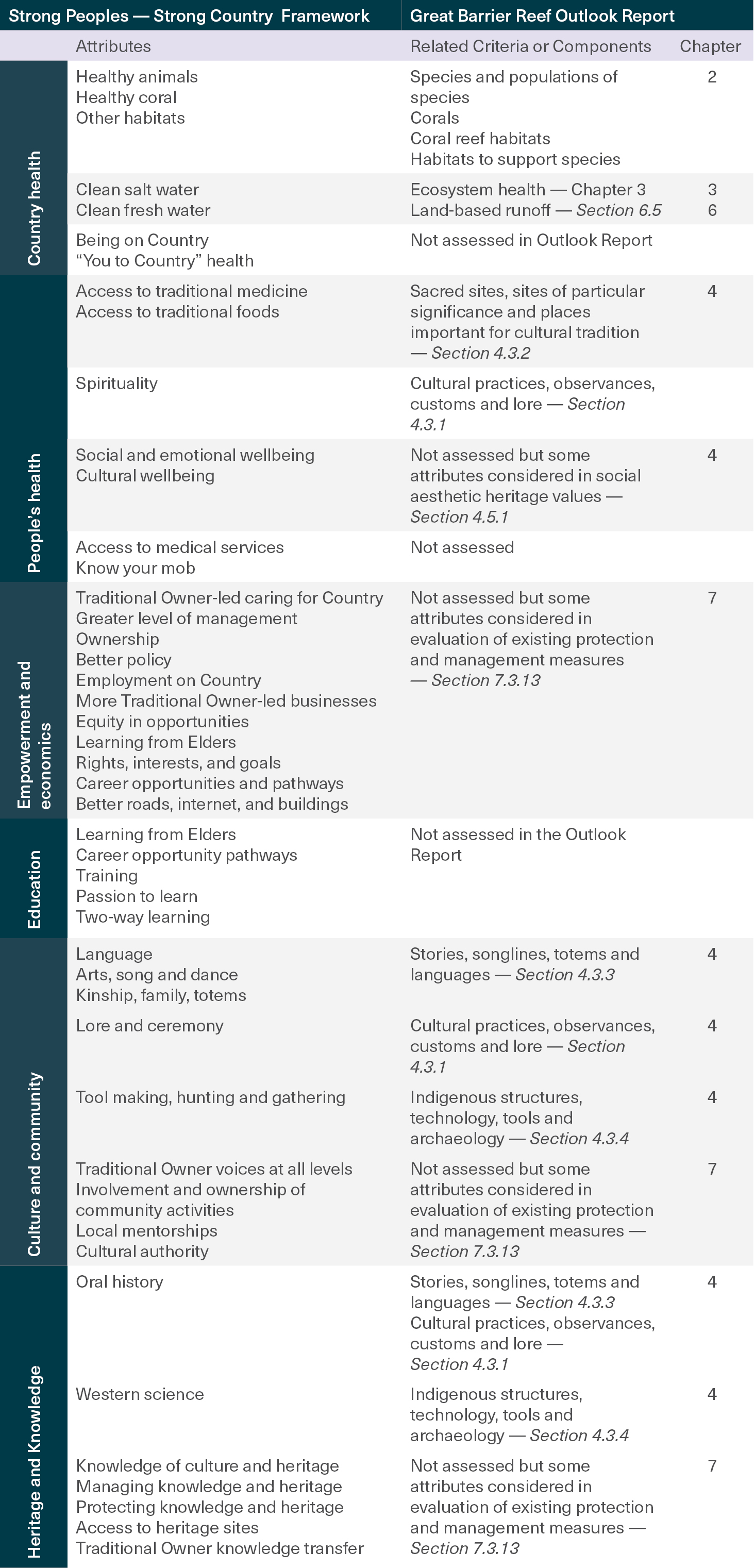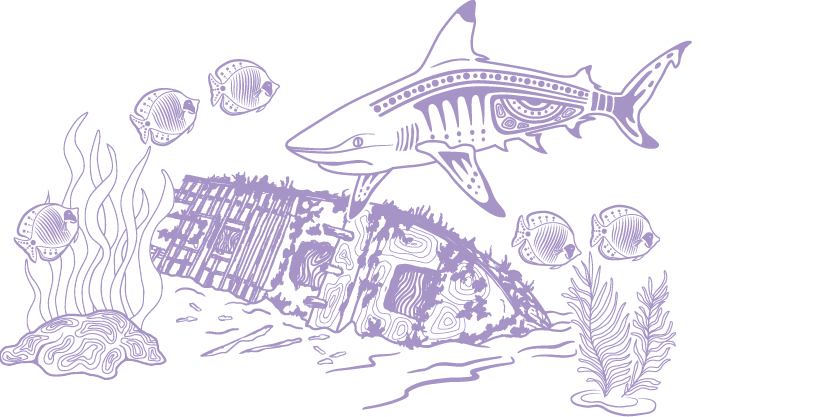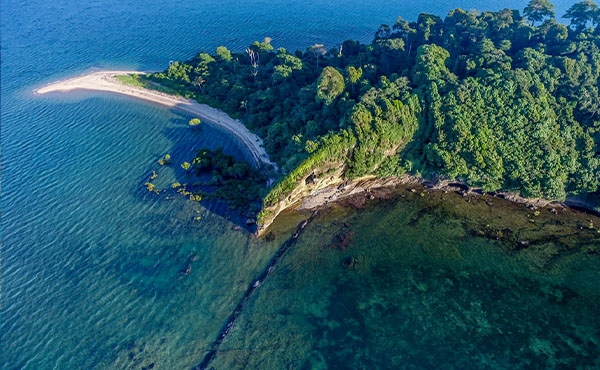Indigenous heritage is living heritage which First Nations people continue to practice, providing meaning to everyday life and contributing to the ongoing wellbeing of communities.2,1101 Traditional Owners view Indigenous heritage as everything in Sea Country. This includes physical (tangible) and non-physical (intangible) expressions of Traditional Owners’ relationships with Country, people, beliefs, knowledge, law, language, symbols, ways of living, sea, land and objects; all of which arise from Indigenous spirituality, including heritage places (sites) and values.1102 Indigenous heritage values are also recognised nationally as a standalone heritage domain (Section 4.1).1062
Indigenous heritage is living heritage that contributes to the wellbeing of communities
Under the Strong Peoples — Strong Country Framework, connections between Country, people, and culture are reflected in six strongly connected ‘hubs’ that show how the health and condition of the Reef is connected to quality of life (Figure 4.2).1103 The framework reflects the Traditional Owner worldview that quality of life is connected inseparably to and underpinned by their Land and Sea Country. In this way, the condition of nature is inseparable from the cultural identity of First Nations peoples. Therefore, the natural heritage values assessed in Chapters 2 and 3 are fundamental to the condition of the Region’s Indigenous heritage values and Traditional Owners’ connection to Land and Sea Country. Similarly, many threats affect Indigenous heritage values through their impact on natural heritage values (Chapter 9). For example, climate change related threats, poor water quality from runoff, coastal development, crown of thorns starfish outbreaks and direct use affect Indigenous heritage values.1102
Figure 4.2
Strong Peoples — Strong Country
The Strong Peoples — Strong Country Framework 1103 identifies six key hubs relevant to Strong
Peoples — Strong Country: country health; people’s health; heritage and knowledge; culture and
community; education; and empowerment and economics. Source: Artwork for Strong Peoples — Strong
Country: © Luke Mallie 2018, Mallie Designs. Licensed for use by Reef 2050 Integrated Monitoring and Reporting Program partners
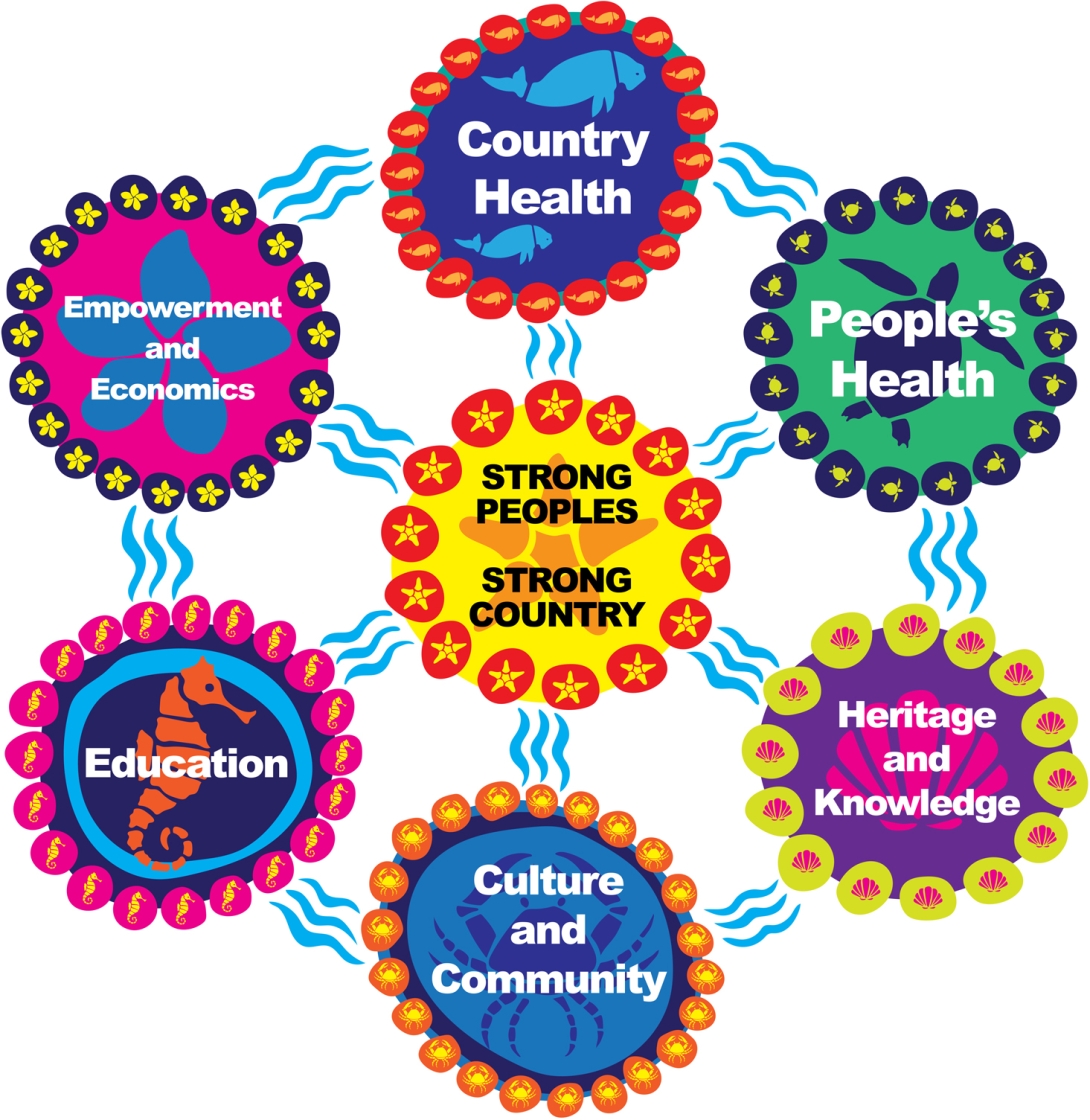
In 2021, a survey of approximately 2490 residents living near the Region identified that people value the Reef because of its rich Traditional Owner heritage.1075 More generally, people value the Reef because it provides a place where people can continue to pass down wisdom, traditions and a way of life.1075
In the Outlook Report, information on Indigenous heritage values is assessed under four discrete components.
- cultural practices, observances, customs and lore
- sacred sites, sites of particular significance and places important for cultural tradition
- stories, songlines, totems and languages
- Indigenous structures, technology, tools and archaeology.
These are considered in addition to natural heritage values assessed in Chapters 2 and 3. In reality, these components are interconnected, and the description of each value should be viewed in this context (Figure 4.3).
Figure 4.3
Nature is inseparable from Indigenous cultural identity
Songlines, stories, cultural practices, significant places, totems, structures and other elements of tangible and intangible Indigenous heritage weave people and the natural world together.
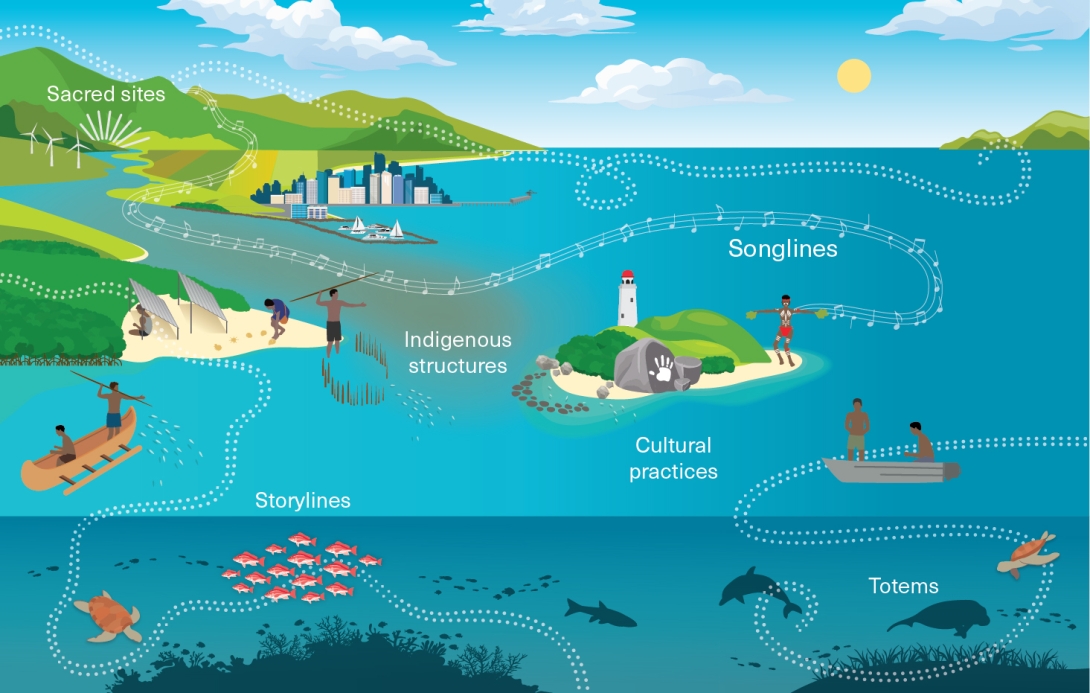
The Outlook Report assesses some, but not all, attributes of Indigenous heritage identified in the Strong Peoples — Strong Country Framework (Table 4.2). The framework was developed to help monitor Indigenous heritage values and was designed in a Traditional Owner led process for the Reef 2050 Integrated Monitoring and Reporting Program. It aims to measure progress in achieving Traditional Owner objectives and actions in the Reef 2050 Long-Term Sustainability Plan, and the Aboriginal and Torres Strait Islander Heritage Strategy for the Great Barrier Reef Marine Park.1104 A small number of Traditional Owner groups along the Reef coastline are currently piloting the implementation of the framework and therefore data is not yet available for many attributes of the framework.
Table 4.2
Attributes of the Strong Peoples — Strong Country Framework mapped to the criteria and components considered in the Outlook Report
